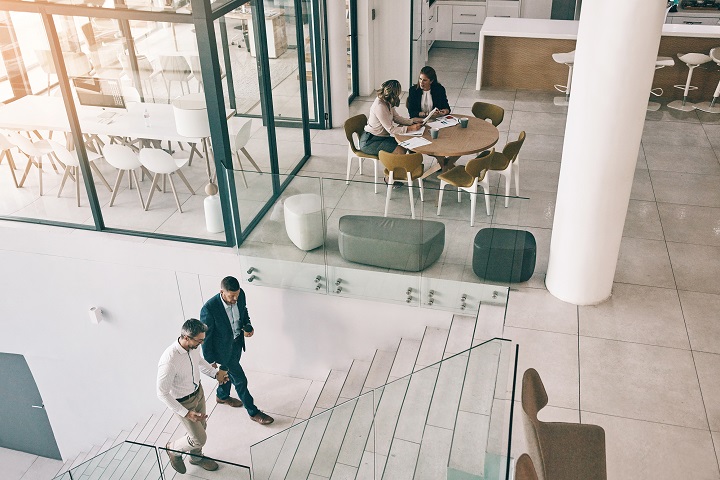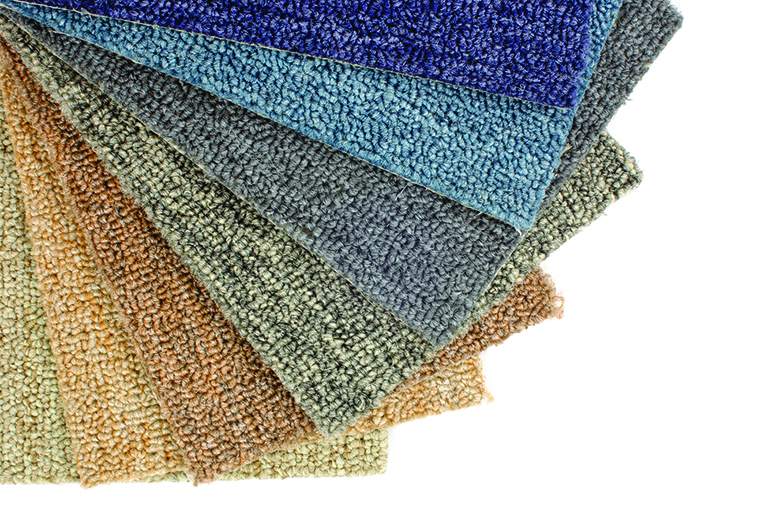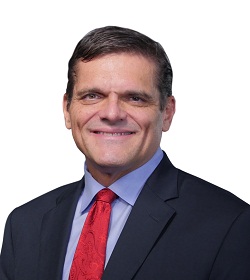
COVID-19 has brought home the importance of indoor air quality to everyone from facility managers and cleaning companies to the general public – but education is required to ensure that effective solutions are affordable and sustainable.
Before going on a run, Dr Gavin Macgregor-Skinner clicks on a weather app on his phone to get a quick analysis of the quality of the outside air to ensure it is safe for him to exercise at that time.
While he marvels at such easy-to-access technology, as well as other air-monitoring devices that he uses in his home, the infectious diseases expert admits to being frustrated.
Why, he asks, don’t more hospitals, hotels, convention centres, schools, airports, offices and other facilities properly advise people about the status of the indoor air quality (IAQ) in their buildings.
“The technology exists,” says Dr Macgregor-Skinner, director of the Global Biorisk Advisory Council (GBAC), a division of ISSA.
“But we just don’t have the culture yet to use it more widely.”
Although some facilities are starting to introduce public dashboards which provide a snapshot of IAQ, they are few and far between, despite the fact that the spread of infectious airborne diseases has become one of the defining issues relating to health and hygiene during the COVID-19 pandemic.
“Reducing risks and protecting people’s health means improving indoor air quality. So, we have to be better in terms of community engagement, communication and education,” Dr Macgregor-Skinner adds.
Attacking mould, bacteria, and viruses
A vast range of air-purification devices and disinfection and sanitisation products have been promoted during the pandemic as building owners and cleaning professionals have sought to target viruses, mould, bacteria and other contaminants in the built environment.
One solution is the brainchild of Daniel Massaioli, a chemistry expert who for more than 35 years has been developing pharmaceutical and cleaning agent formulations, among others.
As founder and director of SAN-AIR Australia, he distributes an air-purifying reactive gel that is inserted into air-conditioning units to prevent mould and bacteria infestations. The business’s product range also includes a surface mould remover and surface sanitiser.
Over the course of almost a decade, he trialled and fine-tuned the non-toxic product after discovering that his boys were suffering from asthma because of mould exposure from air-conditioning in their family home.
“I couldn’t work out what was happening at first,” Massaioli says.
“But I put two and two together and it turned out that our air-conditioning unit was dirty and introducing a high level of mould and bacteria into the airstream.”
Unimpressed with “feelgood products” on the market at the time, or those which relied on aggressive chemicals, he drew on his chemistry skills to create a new option. “That journey took nine years before I decided to go to market.”
Today, SAN-AIR is being distributed as a solution for everything from hospital and commercial facilities to homes. Given that it is a natural product which is easy to use or deploy, while being effective for at least three months, Massaioli is confident SAN-AIR provides a proven and human-friendly alternative to other mainstream solutions.
“You don’t have to use it again tomorrow or the day after. It gives you extended surface-infection control and air purification and that’s what is critical. We need to stop trying to hit everything with harsh chemicals which have to be reused frequently,” he says. “
“We need to slow down and use solutions that work over a longer period of time.”
While the pandemic has caused much heartbreak around the world, Massaioli says COVID-19 has been a “blessing” in the sense that it has given chemists and other infectious disease experts an opportunity to explain the importance of IAQ.
“It’s a topic that was largely ignored until COVID-19 became a problem.”
Rising demand for solutions
Facility services business ServiceFM is also distributing air-purification and anti-mould and anti-virus products, with demand on the rise in response to COVID-19 and the recent eastern seaboard floods.
Executive director Mauro Viola says inadvertent inhalation of airborne mould spores can have extremely harmful health impacts – and even be a killer – while particles settling on to walls and ceilings can be both unsightly and damaging to a building’s internal structures.
ServiceFM distributes the Airofresh air-purification system, which uses water vapour – rather than harsh chemicals – to clean air and stop airborne pathogens.
Viola says testing through Flinders University confirms that the product eliminates 99.9999 per cent of airborne viruses. The business also sells Nanocyn, A TGA-certified hospital-grade disinfectant that targets COVID-19 and many pathogens.
At a time when there are a lot of claims and counter-claims around IAQ and air-purification and sanitisation solutions, Viola advises governments, businesses, cleaning professionals and facility managers to do their homework before adopting certain products or technology.
Too often, he says, organisations have spent considerable sums of money on unproven or environmentally harmful products.
“Decision-makers need to do their research and understand how they can manage air quality without spending hundreds of thousands of dollars on systems,” he says.
Dr Macgregor-Skinner agrees that more facility owners and managers need to look at the science before rolling out IAQ solutions. He is aware of some places that have spent close to $1 million on products that he does not believe will work.
Floorcare a forgotten issue
During the pandemic, there has been minimal discussion about the risk that floors and poor floorcare present in potentially spreading the SARS-CoV-2 virus that causes COVID-19, according to Dr Macgregor-Skinner.
“But it’s the largest surface that people touch in any room.”
He notes the case of an event at a convention centre in the United States, where an ill attendee vomited on the carpet in a high-traffic area.
As a result of poor cleaning procedures that kept disturbing but not eliminating highly contagious noroviruses, scores of people across a number of subsequent events had to be hospitalised.
Floors are a notorious breeding ground for germs and contaminants, so appropriate cleaning, sanitising and disinfecting is required to mitigate infection risks.
Among other solutions, Dr Macgregor-Skinner advocates using HEPA filters in vacuums as they have extraordinary efficiency at capturing ultrafine particles (dust, pollen, mould, bacteria and viruses) and capture particles even below the 0.3 micron HEPA test standard.
“Dirty air leads to dirty surfaces, but dirty surfaces lead to dirty air – and that’s what people don’t think about. They don’t realise that vacuuming without a HEPA filter is creating a dust cloud that is harmful for occupants of buildings and the cleaning professionals themselves.”
Viola agrees that “toxic dust” has become an issue. In the aftermath of COVID-19, many facilities and cleaners have again resorted to the use of harsh bleaches that ultimately dry out after use and become part of the dust that people breathe in.
“This is the problem with bringing back things that we know are bad for the environment and us as humans,” he says.
“It’s a kneejerk reaction and shows that we haven’t learnt during this COVID period.”
Don’t just hit and hope
To really make advances in the IAQ space, Dr Macgregor-Skinner insists that facilities should implement a simple, but definitive indoor air action plan.
That plan can run to just one or two pages and cover elements such heating ventilation and air-conditioning (HVAC) strategies, mould and moisture control, pest management, chemical choices and surface-cleaning options.
“We need to measure the air quality and then work out how to maintain it or improve it,” Dr. Macgregor-Skinner says.
“And to do that everyone needs a clean air indoor action plan.”
At the same time, he wants to discourage a do-it-yourself or bring-your-own-device mentality whereby people adopt new HVAC or ultraviolet germicidal irradiation (UVGI) systems without getting expert advice.
Such an approach may lead to a scenario of “we’re not sure how it works, but we hope it does”.
“There are solutions that are scientifically and evidence-based with a proven ROI,” he says. “So don’t just go out and do a Google search and buy something off Amazon.”
Viola agrees that education is important because “people are often swayed by the noise”. In that regard, all players in the cleaning and hygiene sector have a role to play in disseminating useful and accurate information.
Doing so can prompt a more informed debate and also alleviate some justifiable concerns among work-from-home employees as they transition back into traditional office spaces.
“The messaging is the key,” he says.
“Provide the support and information that companies and facility managers can send to their staff who have been working from home for the past two years in their pyjamas. That’s critical if you want to get them to come to the office and feel safe and supported.”
Better health outcomes the goal
Ultimately, according to Massaioli, the goal must be to provide air-purification and surface-cleaning systems that reduce the impact of germs and viruses and deliver better health outcomes.
To that end, SAN-AIR has conducted research that indicates its products are dramatically driving down sickness rates in workplaces.
“I hope that we come to encourage people to adopt a mindset that if they take preventative actions, they’ll stop those infections.”
Dr Macgregor-Skinner believes it is crucial for all parties dealing with IAQ issues to appreciate that “whatever we do doesn’t eliminate or decrease all the risks”.
He wants to help foster an environment in which facility managers, cleaning professionals and the community can understand what and how and access the best combination of actions to improve IAQ monitoring and outcomes based on their specific locations and circumstances.
“We want this indoor air quality issue to move away from being a challenge to being a culture.”
This article was first published in the September/October issue of INCLEAN magazine.
Read the original article here.
Comment below to have your say on this story.
If you have a news story or tip-off, get in touch at info@incleanmag.com.au
Sign up to INCLEAN’s newsletter.





